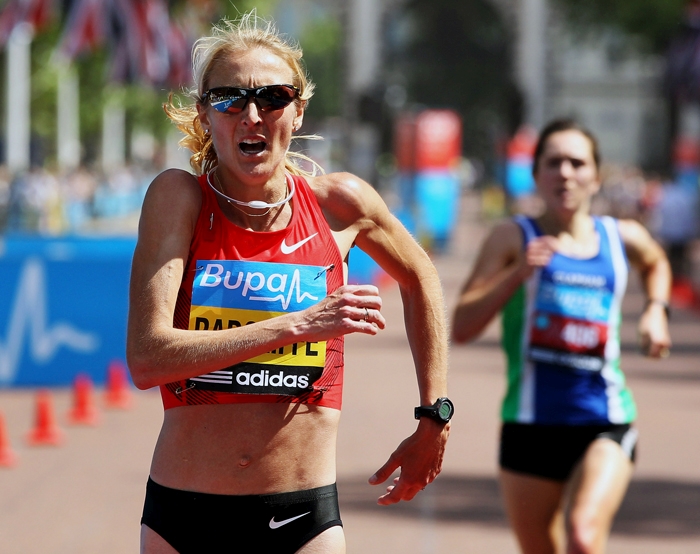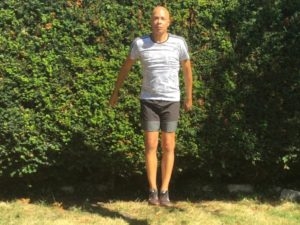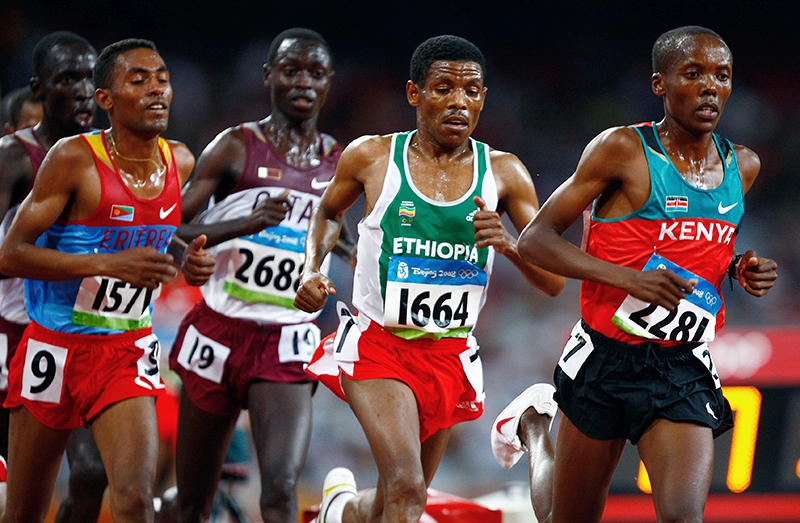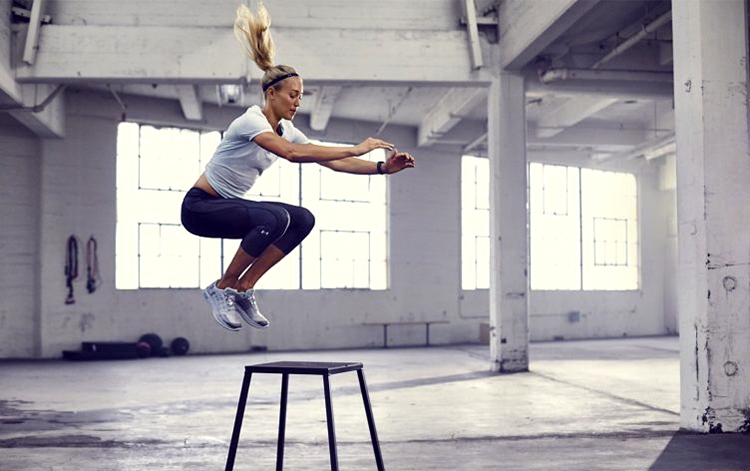You are viewing 1 of your 1 free articles. For unlimited access take a risk-free trial
Plyometrics training: time to jump start your running
Many runners often eschew strength and conditioning in favour of more miles. However, hopping, bounding and drop jumps in the form of plyometrics could enhance your endurance. England athletics coach and author John Shepherd explains
Many runners often eschew strength and conditioning in favour of more miles. However, hopping, bounding and drop jumps in the form of plyometrics could enhance your endurance. England athletics coach and author John Shepherd explains
Plyometrics have been a major aspect of athletic training across many sports for over 40 years. Yuri Verkhoshansky, the former Soviet track coach/ sports scientist, is known as the ‘father’ of plyometric training – in particular with his work on the drop/depth jump, which involves jumping from a raised platform onto the ground, upon which a rebound jump is immediately made.
Plyometrics uses the principle of a quick-fire action and reaction between two muscular actions – a shortening and a lengthening one. The former is known as a concentric muscular action and the latter an eccentric one. When you land from a jump (and that includes running, which is basically a series of plyometric leaps from one foot to the next), the muscles, ligaments and tendons, that surround the ankle, knee and hip joint will undergo a stretch (eccentric action), immediately followed by shortening (concentric action) and a release of energy.
This ‘stretch-shortening cycle’ is rather like the action of a bow and arrow. The drawing of the bow is akin to the eccentric stretch and the firing of the bow (and the release of all its stored energy to the arrow) the concentric reflex. Examples of commonly used plyometrics exercises are shown in figure 1 .
Speed matters
Verkhoshansky discovered that speed (and jump power) could be enhanced by plyometric training. He also advocated speed of movement as being the key to plyometrics – ie to gain the most from plyometrics, the contact phase with the ground, must be kept to a minimum. To put it another way, reaction time is a more important variable than height gained. This is important to consider when you add plyometrics into your training routines.
Why is speed more important? A lightening-quick connection between the stretch and the reflex requires considerable neural energy through the central nervous system (ie your intent to move quickly), and therefore turn on (recruit) fast twitch muscle fibres. Basically, when performing plyometrics this way, you are ‘teaching’ your body to release more ‘athletic horsepower’ through faster firing muscles.
Fast twitch fibres, as their name suggests, are the primary drivers of speed and power. Endurance training like slow long-distance running can blunt their power capacity and even alter their contractile qualities, making them more endurance orientated. As we will see however, it’s still possible for an endurance runner to get more out of these fast fibres (and slow twitch fibres) through plyometrics in a way that will boost running performance.
Another hugely important benefit of plyometrics for endurance runners comes from the boost they can give to running economy (RE) - sometimes also known as performance economy. RE is defined as the energy demand for a given velocity of submaximal runningBSports Med. 2004;34(7):465-85. Runners with a superior RE will use less energy and therefore less oxygen than runners with a poorer RE at equal running speeds.
It’s important to understand that there is a strong association between RE and endurance running performance; in elite runners, RE is actually a better predictor of running performance than maximal oxygen uptake (VO2max). VO2max is largely genetically determined. Although it can be enhanced by training, it can’t be trained and improved so to the same extent as RE. Box 1 identifies some research showing that plyometrics have a major role to play in terms of improving endurance performance through increasing RE.
Plyometrics and stiffness
Plyometrics training can enhance lower limb stiffness. If there is less yielding on foot-strike at the ankle, knee and hip joints, more energy will be returned. This extra energy can propel the runner along faster and with less effort. There are numerous ways to measure stiffness. Plyometrics and in particular hopping are key determinants of developing (and identifying) stiffness and therefore speed - whatever the distance covered (see case study later).
Figure 1: Examples of commonly used plyometrics exercises

CASE STUDY: Paula Radcliffe, plyometrics and limb stiffness

Exercise physiologist Professor Andrew Jones worked extensively with elite distance runner Paula Radcliffe. Radcliffe holds the women’s world marathon record with 2hrs 15mins 25secs. In a research paper, Jones documented the factors that he identified as improving Radcliffe’s performance between 1996 and 2003, and identified RE as being particularly importantInt J of Sports Science & Coach Vol1 No2 2006. Between 1996 and 2003 Radcliffe exhibited a 15% improvement in RE, and Jones identified power training (plyometrics and weights) as potential contributors, plus an associated increase in leg stiffness.
Interestingly, Radcliffe’s flexibility as measured by a sit and reach test declined over this period - from 8cm past her toes in 1996 to 4cm past in 2003. While a loss of flexibility is normally considered undesirable, Professor Jones suggested that in Radcliffe’s case, it was reflective of the increase in limb stiffness, which was partly responsible for her performance gains over that period.
As well as Professor Jones, Radcliffe also enlisted the services of Irish physio Gerard Hartmann. Hartmann also identified the need to improve RE and speed. When Radcliffe came to him, Hartmann explained that to achieve her goals at 5km and 10km, she would need to be able to run the last laps in a race in around 60 seconds. This compared with her previous best times of around 65 seconds.
As part of a plyometrics and weights programme, Hartman used a hopping test to measure Radcliffe’s progress. This involved timing 20 hops onto and off a 16-inch step. On her first attempt, Radcliffe managed a time of 28 seconds; however, after relevant training this came down to 17 seconds. Although around 3-4 seconds slower than elite middle distance runners that Hartmann worked with, it was still an immense improvement - reflected in the speeds of her last laps in races, which fell to around 60 seconds.
Putting plyometrics into practice
If plyometrics work for endurance runners by improving RE, what types of exercise should you be performing and how should they be executed? Plyometrics can be classified according to the stresses they place on the body and their technical/performance requirements. Note however that this doesn’t mean less stressful or less demanding to learn exercises are inferior. The section below shows some endurance-enhancing plyometrics and provides technique tips and other relevant comments. Examples of sessions are then provided and further factors to bear in mind when performing plyometrics. Note that the suggestions for reps and sets are for guideline purposes only. Always underestimate what you think you can achieve and build up slowly.
Straight leg jumps
- Intensity/Technical Level - Low intensity
- Technique Tips - Keep your legs, almost straight, and predominantly using your calf and ankle muscles jump into the air. Pull your toes up in mid-air and try to rebound from this dorsi-flexed position each landing. Use your arms to boost power.
- Comment - This plyometric exercise places the emphasis on the lower legs, and will improve stiffness around the ankle joint as well as the knee and hip.
- Perform – 4 sets, 12 reps

Tuck Jumps
- Intensity/Technical Level - Low-medium intensity
- Technique Tips - Bend your knees slightly and then extend them rapidly to leave the ground. As you do so pull your knees up to your chest. Extend your legs and then explode upwards from the floor to repeat.
- Comment - Running is obviously a unilateral activity but these double leg exercises are a good way to introduce more intense exercises into your training. Always think about landing ‘light and quick’.
- Perform – 4 sets of 10

Lateral and forwards/ backwards double-leg jumps
- Intensity/Technical Level – Low intensity
- Technique Tips - Using a line on a running track or similar, jump from side to side or forwards and backwards over it. Maintain a relatively flat trajectory and keep your travel short. As with straight leg jumps keep your legs virtually straight.
- Comment - As well as developing improved speed and power, the lateral version will enhance the stabilising and control abilities of your legs and ankles and contribute to reduced injury potential.
- Perform – 3-4 sets of 10 reps.

Bounds
- Intensity/Technical Level - Medium-high intensity
- Technique Tips - Bounds are like the step phase in a triple jump. You transfer from one leg to the next, going for a combination of speed and distance. Your arms should work as if running. Strike the ground on your forefeet and under your hips. Think forwards not up.
- Comment - This unilateral exercise is closer to running and will require good left/right side integration and core control.
- Perform – 3-4 sets of 6 reps or over a set distance eg 15m, 20m, 30m. Measure your progress over a set number/distance. If you use a short approach to run into the bounds more speed will be required and more ‘quick’ strength required. It’s therefore recommended that you progress to this version and use it more than the standing start option as this will develop greater stiffness.

Drop/depth jumps
- Intensity/Technical Level - Medium
- Technique Tips - Step off a 75cm or so high platform and upon landing, immediately react and jump for height.
- Comment – Don’t dwell once you’ve landed; rather react as quickly as possible and begin the jump. Speed will pay greater dividends than slowly gained height. You can also perform these by immediately going forwards on landing and adding a different jump - eg bunny jumps (see later).
- Perform – Do: 2-3 sets of 4 reps. As with all plyometrics, do not rush through them. Take at least 20 seconds between individual jumps, to enable your physiological and neural system to regenerate and allow full-on commitment.

Partial baby hops
- Intensity/Technical Level – Medium to high
- Technique Tips – Hop forward using a virtually straight leg. Try and ‘pull’ your trailing leg forward between hops. The idea is to use the natural elasticity in your muscles to ‘ping’ from one hop to the next.
- Comment – Try not to force the movement. These hops are designed to develop the natural stretch/reflex capacities of your muscles. They are also a great exercise to start a plyometrics session with, especially for those with relevant experience.
- Perform – Do: 2 sets x 10 reps or 2 x 20 metres (for each leg).

Bunny jumps
- Intensity/Technical Level - Medium
- Technique Tips – Similar to tuck jumps. However, for the bunny jumps, bend your knees slightly then dynamically extend them to jump forward. Repeat. Don’t overly cushion your landings – transition quickly.
- Comment – As per tuck jumps
- Perform – Do 3 sets x 4 reps. You can measure your distance covered to monitor improvement.
SAMPLE ENDURANCE-BASED PLYOMETRICS SESSIONS
These sessions listed are for guideline purposes only. As you become familiar with plyometrics, you will be able to select the best options for your event and available training time. Plyometrics should be continued all year round. Once a certain level of proficiency has been gained, it becomes more about maintaining rather than gaining. As an endurance runner, tthis should be your goal – unlike sprint athletes, where gaining that last 5% is vital.
Session 1 – aimed at those introducing plyometrics into their training
- Straight leg jumps: 3 x 10 reps
- Lateral double leg jumps: (over line) 3 x 10 reps
- Backward & forward double leg jumps: (over line) 3 x 10 reps
- Partial hops: 3 x 8 reps (each leg)
Session 2 – aimed at those with intermediate experience
- Partial hops: 3 x 8 reps (each leg)
- Bounds: 2 x 20m (each leg)
- Drop jumps: (land & react for height) 2 x 6 reps
- Drop jumps: (land & react for distance) 3 x 6 reps
Session 3 – aimed at those with considerable experience
- Partial hops: 3 x 10 reps (each leg)
- Drop jump with hop forward: 2 x 6 reps (each leg)
- Drop jumps with two forward hops: 2 x 3 reps (each leg)
- Bounds: 2 x 20m with a 5-metre run on 2 x 20m
FACTORS TO ACCOUNT FOR WHEN PERFORMING PLYOMETRICS
*Surface - It’s best to perform plyos on a running track. Suitable alternatives include sprung gym floors or dry flat grass.
*Speed of movement - Always focus on the ‘quickness’ of your reactions – don’t lever yourself out of jumps. Land light and move quickly.
*Be in the moment - Focus on what you are doing and get your neural system fully switched on. It’s your brain signalling that will make the movements fast (as well as developed relevant strength and familiarity).
*Don’t overdo it - Build up slowly, and as mentioned, underestimate what you think you can achieve initially. Expect to experience some muscle soreness but this should be a rare occurrence once you include plyos regularly into your workouts.
*Watch for fatigue - If you notice that your reactions and ground contacts are slowing then take longer recoveries or stop the session. You are looking for quality of movement that maximises neuromuscular connection. Performing slower movements regularly will result in a less than optimised transference of power into your running. Technique - Following on from the above make sure you have proficiency over the exercise you are performing. This is particularly important for the more advanced exercises.
*Control your risk - If, for example, you have weak ankles or ‘grumbling’ knees then make sure you pre-train these to be able to cope with the demands of plyos. or simply don’t perform the exercises that you know will do more harm than good.
*Perform plyos when you are fresh - A great opportunity to fit plyos into your run training is during your warm-up - or in separate strength and conditioning workouts. After a run your muscles and mind will be less able to generate force and even produce the optimum movement patterns. Think of plyos as running drills and combine them with these.
*Combine forward with upward and lateral movements - Cover all bases, but emphasise forward movements when plyo training.
*Test yourself - Just as Paula Radcliffe did, perform a regular test to see how you are progressing. It could be as simple as the distance covered over 20 bounds or hops. Just keep the tests consistent and make sure you are fresh when you perform them.
Newsletter Sign Up
Testimonials
Dr. Alexandra Fandetti-Robin, Back & Body Chiropractic
Elspeth Cowell MSCh DpodM SRCh HCPC reg
William Hunter, Nuffield Health
Newsletter Sign Up
Coaches Testimonials
Dr. Alexandra Fandetti-Robin, Back & Body Chiropractic
Elspeth Cowell MSCh DpodM SRCh HCPC reg
William Hunter, Nuffield Health
Keep up with latest sports science research and apply it to maximize performance
Today you have the chance to join a group of athletes, and sports coaches/trainers who all have something special in common...
They use the latest research to improve performance for themselves and their clients - both athletes and sports teams - with help from global specialists in the fields of sports science, sports medicine and sports psychology.
They do this by reading Sports Performance Bulletin, an easy-to-digest but serious-minded journal dedicated to high performance sports. SPB offers a wealth of information and insight into the latest research, in an easily-accessible and understood format, along with a wealth of practical recommendations.
*includes 3 coaching manuals
Get Inspired
All the latest techniques and approaches
Sports Performance Bulletin helps dedicated endurance athletes improve their performance. Sense-checking the latest sports science research, and sourcing evidence and case studies to support findings, Sports Performance Bulletin turns proven insights into easily digestible practical advice. Supporting athletes, coaches and professionals who wish to ensure their guidance and programmes are kept right up to date and based on credible science.













